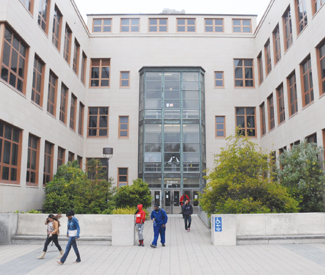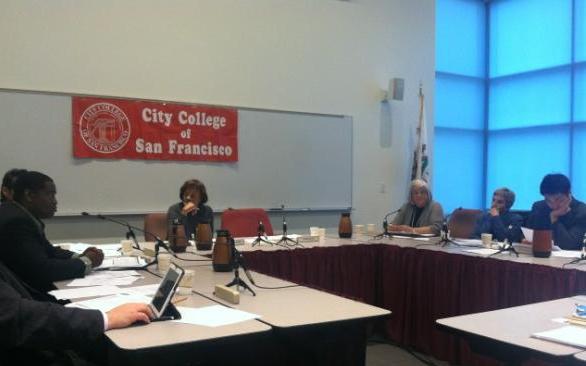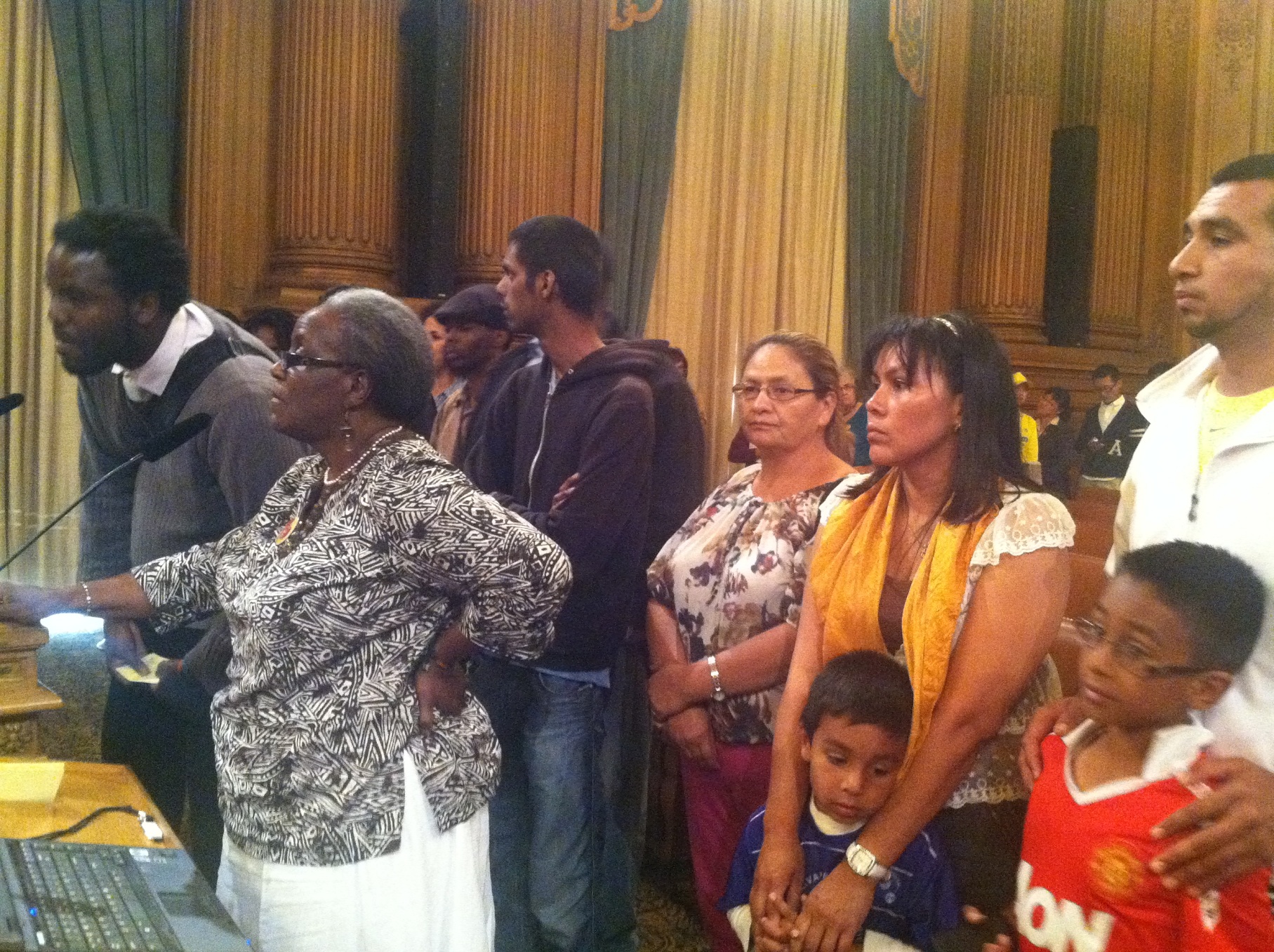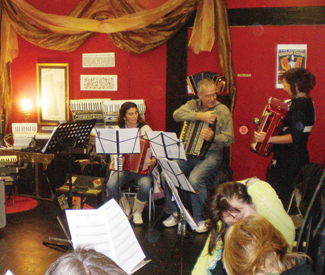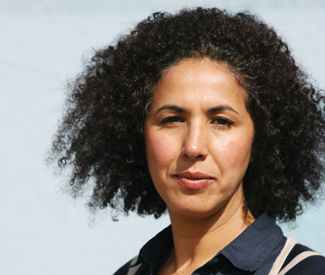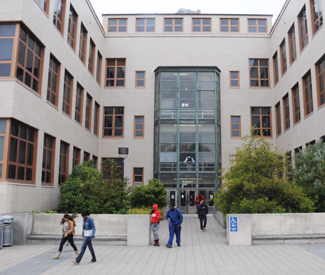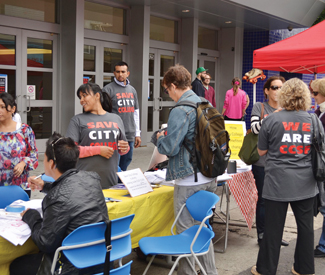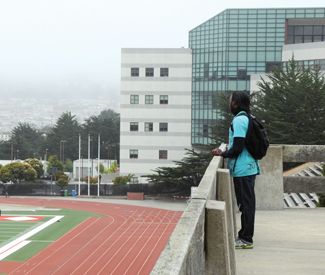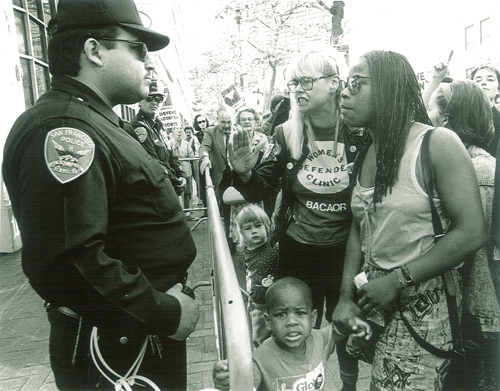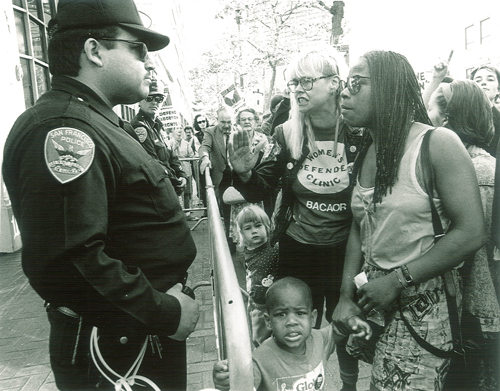WEDNESDAY 24
Sister Spit anthology release party
In 1994, forces amassed to counteract a San Francisco spoken word scene inexplicably dominated by “guys who ripped off their shirts and hollered their poems in homage to Henry Rollins,” as Sister Spit brainsmith and defining queer storyteller Michelle Tea writes in the introduction to the anthology of said event 18 years later. In the intervening decades, Sister Spit found fans desperate for its brand of bold, brash femme/queer/crazy musings, an international tour was born, and Tea found cronies in the likes of Ali Liebegott, Ben McCoy, Rhiannon Argo. City Lights’ recently-released Sister Spit anthology is a party, much like the reading Tea hosts tonight to fête it. Expect laffs, primal yawps, and rule-breaking exuberance that cannot be held to the printed page. (Caitlin Donohue)
7pm, free City Lights Bookstore 261 Columbus, SF
(415) 362-8193
“24th on 24th”
It’s been more than three years since Oakland’s beloved Parkway Speakeasy Theater closed — and the Bay Area cinema scene hasn’t been the same without its mothership for the “your living room, but better” style of moviegoing (beer, couches, pizza … giant screen, eclectic programming). But hark! Glad tidings from the East Bay: the New Parkway, which retains the original’s concept but boasts a new location and management, is readying for its grand opening November 30. Tonight, head out and welcome the New Parkway to its new ‘hood at a free block party on Oakland’s bustling 24th Street, with local businesses pitching in. Food, live music, and yes, film screenings will be in full effect. (Cheryl Eddy)
6pm, free
24th Street between Telegraph and Broadway, Oakl.
Lost in the Trees
Beautiful guitar, horn, and violin arrangements by Lost in the Trees create a haunting presence as frontperson Ari Picker sings about his mother’s suicide. There is something incredibly deep about any art that ruminates on why someone would want to leave this life, particularly when it is someone you love so dearly. The album, A Church That Fits Our Needs, is meant to be a place for his mother’s spirit to return to, but he speaks for more than just her when he sings lines like, “don’t you ever dare think she was weak hearted.” It’s a lyrically heavy work in which the music will draw you into the dark scenes of his story. (Molly Champlin)
With Dana Bouy and Midtown Dickens
8pm, $12
Bottom of the Hill
1233 17th St., SF
(415) 626-4455
Rasputina
If you’re as nerdy as I am, you may have discovered this band when their breakout song “Transylvanian Concubine” being featured in Buffy the Vampire Slayer. If you’re not as nerdy as I am, it’s not too late to let Rasputina help you embrace that inner geek. This New York cello-based chamber rock group will have you tapping your toes and reaching for your encyclopedias as it slathers on the Victorian-era historical references over its dark, orchestral pop. Its most recent album, Sister Kindhook, is thematically centered on Colonial Federalism. Added bonus for dude fans: for the first time in the two decades the group has been together, Rasputina’s lineup now includes a male cellist. (Haley Zaremba)
With Faun Fables
8pm, $16
Great American Music Hall
859 O’Farrell, SF
(415) 885-0750
THURSDAY 25
“Accreditate This!”
When it was announced this summer that City College of San Francisco hovered on the brink of destruction (or at least, was in danger of losing its accreditation due to staffing woes and budget cuts) the city freaked out. Lose our only community college? The thought was preposterous, offensive. But how often do most of us actually engage with our beloved CCSF? For most, the answer is not enough — which is why we are recommending this group show of the school’s visual art students. Their work, which will include sculptures, prints, drawings, and other forms of creativity, will serve as a terrific reinforcement for the fact that this institution is a source of creativity and know-how for the city that it serves. (Donohue)
Through Nov. 5
Opening reception: Wed/25, 5pm, free
City College of San Francisco Visual Arts Building
50 Phelan, SF
Flying Lotus
After the game-changing, brain-frying astral thrash of 2010’s Cosmogramma, the heavyweight champion of the LA beat scene is back with Until the Quiet Comes: a darker, moodier, earthbound affair, content to explore Flying Lotus’ genre-splicing sound-world at a relaxed pace. The result is an album as structurally unified as it is thematically fractured, rotating between hip-hop, jazz, and EDM vignettes, as Thundercat’s incendiary bass plucking, Austin Peralta’s fusion-y keyboards, and seductive vocals from Erykah Badu and Thom Yorke provide a sense of continuity. Yet, since he’s given us everything from solo laptop sets to full-on ensemble performances in the past, the question remains: how will the newest chapter in the FlyLo odyssey translate to the stage? (Taylor Kaplan)
With Teebs, Jeremiah Jae
8pm, $25
Fox Theater
1807 Telegraph, Oakl.
510) 302-2250
Gilberto Gil
One of Brazil’s greatest musicians, the legendary 70-years-young Gilberto Gil is showing no signs of slowing down. Back in the ’60s, the singer, musician and songwriter was an integral early figure in the Tropicalia genre, a unique musical style that blends rock, samba, reggae and African roots music. Gil draws as much influence from Bob Marley as he does from from legendary Brazilian musical legend Caetano Veloso. An outspoken political figure, Gil took some time away from music as Brazil’s Ministry of Culture from 2003 to 2008. After more than four decades, Gil remains a potent and dynamic live performer. The versatile performer can be strumming a guitar and cooing to the crowd in bossa nova at one moment, then inciting an impromptu party the next. (Kevin Lee)
7:30pm, $25–$85
Paramount Theatre
2025 Broadway, Oakl.
(510) 465-6400
Public Image, Ltd.
After the Sex Pistols imploded onstage here in San Francisco in 1978, John Lydon dropped his “Rotten” moniker and formed Public Image Limited, a highly influential band of revolving musicians that centered around the often times caustic and controversial, yet always riveting band leader. Featuring Lydon’s trademark snarl combined with a host of styles including dub bass, searing guitars, and electronic experimentation, PiL helped lay the foundation for a generation of post-punk bands to come. The band released its first new album in 20 years, This is PiL, last May, a collection of songs that prove Lydon and Co. have not mellowed a bit with age. (Sean McCourt)
8:30pm, $39.50–$42
Regency Ballroom
1300 Van Ness, SF
FRIDAY 26
“Animate Your Night: Halloweentown!”
As fans of classic Disney cartoons know, there was always a dark and sinister side to things in addition to the cute animals and loveable characters — a variety of ghosts, ghouls, and skeletons sometimes haunted the screen (and imaginations) alongside favorite fiends such as the Headless Horseman, and Maleficent. Raise a goblet to the spooky side of Disney at tonight’s “Animate Your Night: Halloweentown!” party, where guest are invited to dress as their favorite character. Want to set the mood while getting ready? Try putting on Fantasia, and cue up “Night On Bald Mountain,” featuring one of the most fearsome of all Disney villains, the devilish Chernabog. Happy hauntings! (McCourt)
7-10 p.m., $5–$10.
Walt Disney Family Museum
104 Montgomery, SF
(415) 345-6800
Quickies Indie Erotic Film Festival
Once a year, locally-born sex toy behemoth Good Vibrations gives us an opportunity to don a Halloween costume, kick back in a historic theater, and watch ourselves have sex. This would be Good Vibes’ annual erotic short film competition, which welcomes sensual submissions featuring sexualities of all stripes, vanilla and kink alike, and all manner of core, rock-hard to whisper-soft. This year, sexologist-about-town Carol Queen and drag cinenova Peaches Christ host the affair, whose audience-selected winner will take home a cool $1,500. Those aching for more sexual sensibility in their weekend will be relieved to know that the following day, spots are still available at Good Vibes’ very first Sex Summit — a gathering of experts on all manner of sex-positive subjects. (Donohue)
Pre-party 7pm, $10; screening 8pm, $10
Castro Theatre
429 Castro, SF
(415) 621-6120
Nobunny
Prepare to get weirded out in the best possible way, yet again, by local garage-pop artist and animal impersonator Nobunny. Punk musician Justin Champlin’s hairy, carrot-craving alter ego is a wonderfully unpredictable vision in a creepy rabbit mask and various disheveled states of undress that often include clothes made of such innovative materials as meat or trash. His debut album Love Visions is a gritty mixture of lo-fi garage rock and catchy power pop hooks. Through the years, Nobunny has opened for Hunx and His Punx, Ty Segall, and the late, great Jay Reatard. Now, with all the headlining glory he deserves, Champlin can finally spread his message: Nobunny Loves You. (Zaremba)
With Shannon and the Clams, Pangea, Audacity, Uzi Rush
8pm, $14
New Parish
579 18th St., Oakl.
(510) 444-7474
SATURDAY 27
Red Fang
Obviously some Tumblr user has already made Fuck Yeah Red Fang a reality. And it’s fitting, really — Portland, Ore.’s good-time ambassadors of stoner rawk may embrace old-school headbanging, but the quartet has also mastered the fine art of using the internet to connect with fans (follow the band on Facebook and marvel at all the Red Fang tribute tattoos) and make new ones (see: Red Fang’s videos, mini-comedy masterpieces all. The band’s blog, filled with wry observations of life on the road, is hilarious, too.) But yeah, really the best way to experience Red Fang is to get the hell off your computer and see them live. Lucky for you, there’s a show tonight. Fuck yeah! (Eddy)
With Black Tusk and Lord Dying
9pm, $15
Slim’s
333 11th St., SF
MONDAY 29
“Everyday Monsters”
The Ashby Stage is becoming quite the hotspot of creativity in Berkeley; this year, their off-shoot program, the Shotgun Cabaret, welcomes First Person Singular to the theater for a series of monthly literary-mashups and dramatic readings. Having brought to life Vladimir Nobokov in his Oxford college lectures and famous first ladies in karaoke bars, now they turn their talents to Rod Serling’s Twilight Zone. This month’s performance will feature three of the classic sci-fi television episodes, reposing the show’s characteristic mind-bending questions and human-as-alien scenarios for the modern stage. You can step into a dimension of sound, of sight, and of mind, and it will be even more real off the screen; all you need to bring is your imagination. (Champlin)
8pm, $15
Ashby Stage
1901 Ashby, Berk.
(510) 841-6500
TUESDAY 30
The Cabinet of Dr. Caligari
Probably the classiest way to celebrate Halloween this year, the film will be shown in the elegant Davies Symphony Hall with live organ accompanist, Cameron Carpenter, who will keep your skin crawling throughout the evening. Said to be the eminent horror film of the silent era, The Cabinet of Dr. Caligari (1920) is complete with artistic sets, jerky dancer-like movements, an evil doctor, a somnambulist science experiment, murder, and marriage. The tightly shot, carnival scenes give the impression of a Kadinsky painting and the ending is just as twisted as the characters in this golden relic. Get out you’re your scariest vintage attire as costumes are encouraged. (Champlin)
With Cameron Carpenter on organ
7pm, $20–$60
Davies Symphony Hall 201 Van Ness
(415) 864-6000
The Guardian listings deadline is two weeks prior to our Wednesday publication date. To submit an item for consideration, please include the title of the event, a brief description of the event, date and time, venue name, street address (listing cross streets only isn’t sufficient), city, telephone number readers can call for more information, telephone number for media, and admission costs. Send information to Listings, the Guardian, 225 Bush, 17th Flr., SF, CA 94105; or e-mail (paste press release into e-mail body — no attachments, please) to listings@sfbg.com. Digital photos may be submitted in jpeg format; the image must be at least 240 dpi and four inches by six inches in size. We regret we cannot accept listings over the phone.

